In this article I thought I would set down ten things that you can do – ten principles to take account of – to benefit your practice of Reiki. This is not something that has come from Japan, or from early practitioners of Reiki: it is just something that I have put together myself. I hope that this article will be of interest to people at all Reiki levels.
(1) Reiki is all about you
Although Reiki is sometimes presented in the West as a sort of complementary therapy, a hands-on treatment technique, or a form of Japanese spiritual healing, that is not what Reiki is all about. If your practice of Reiki consists mainly of treating other people then you are missing the point because Reiki is all about you! Reiki is a personal practice for your self-healing and your spiritual and self-development. You are the priority here.
In Usui’s time the treatment of others was not focused upon or emphasised, in fact treatments were a bit of a distraction from the main thrust of his teachings, which Usui Sensei referred to as a “system to achieve personal perfection”. Right from the start, the system was about personal development, not working on others.
So to gain the greatest benefits for yourself through Reiki, you need to establish a decent routine of working on yourself in whatever way that you were taught. If you were taught Western-style then do your hands-on self-treatment regularly, if you know about Japanese-style Reiki then practise your Hatsurei ho; if you know about Usui Sensei’s original system then add his self-treatment meditation to your regular Hatsurei.
I know that some people seem to have the view that working on yourself is in some way ‘selfish’, but if you cannot look after yourself properly then how can you help other people? By working on yourself regularly you make yourself a better channel and more effective at what you do in terms of treatments, so there are plus points all round for those who make themselves their Reiki priority.
(2) Base your practice on the precepts
Usui Sensei established a simple spiritual system that was rooted in his precepts, his ‘rules to live by’. Rather than being an interesting set of instructions to read on a course and put to one side, Usui’s precepts are at the very heart of his system, and it was said that as much spiritual development could come through following the precepts as would come through doing any of the energy work. If we are consider ourselves as ‘practising Reiki’ then we will follow the precepts.
So we need to think deeply about the precepts and how they affect our lives. We need to consider each precept in turn and reflect on how that precept might impinge upon and guide our thoughts and behaviour and relationships and priorities. And we need to do this regularly, using the precepts as an ongoing source of guidance, the effects of which will make a real difference to us, and the people around us, over time.
The precepts are something that you we drip-feed into our lives, something that we refer to regularly and reflect on regularly, for our own benefit and for the benefit of the people with whom we come into contact.
(3) Practise mindfulness
Although not referred to on most Reiki courses, the practise of mindfulness was as important part of Usui Sensei’s system as were the precepts, and in fact mindfulness is hidden in the precepts! Mindfulness is a form of meditation that one can perform at any time, when carrying out ordinary, mundane activities like walking somewhere or washing dishes or sipping tea, and involves becoming consciously and fully aware of your thoughts and actions in the present moment, non-judgmentally, existing in the moment.
When you are living ‘in the moment’, fully engaged in what you are doing, fully aware of the present moment, then you are existing in a state where there is no anger and there is no worry. By not dwelling on the past or speculating about the future, by embracing fully the present moment, you are living the precepts, and mindfulness brings with it humility, honesty, compassion and forgiveness.
So mindfulness is a way of experiencing Mikao Usui’s spiritual principles.
(4) Work on yourself daily
Reiki isn’t something that you can pick up once in a while, play around with for a bit, and then drop again… not if you are looking to receive the many benefits that are available from the system, anyway. If you are looking for consistent benefits then you need a consistent practice. The precepts say “just for today”, and that is a good starting point: just do something with Reiki today. You can manage that. It doesn’t have to be hours and hour’s worth. Just do something for 10 minutes: you have ten minutes. Do something for 20 minutes. And if you don’t have ten minutes, get up 10 minutes earlier: problem solved.
Don’t worry about what you will do tomorrow: just focus on today.
When tomorrow comes, do the same. Just do something with Reiki, even for ten minutes. Don’t worry about tomorrow: just do something today.
(5) Commitment is the key
There are spectacular benefits to be enjoyed through practising Reiki, and all you need to do is to work with the energy consistently, focus on the precepts and practise mindfulness. The benefits build up cumulatively, you see, and sporadic and occasional practice isn’t enough if you want the very best out of your Reiki. You will get out of the system what you are prepared to put into it, so Reiki deserves a little of your time each day. You need to plug away at a few simple things, a few simple exercises or routines, and make them a regular part of your day, as regular a part of your routine as brushing your teeth or your hair.
And once you have established a regular habit of working on yourself with Reiki then you will find that it is difficult to stop: you will find that you really miss your hatsurei session or your self-treatment if you miss a day. That is the sort of position you are looking to get yourself into and by committing yourself to working with Reiki each day, even if it is a little inconvenient, you will reach that point.
(6) Don’t try too hard
While we do need to commit ourselves and establish a decent routine of working on ourselves in order to obtain the many benefits that are available to us through Reiki, we should at the same time make sure that we do not try too hard, work for too long, or take our practice too seriously. Reiki is best enjoyed in a gentle, laid-back and light-hearted fashion rather than in a fists-clenched, furrowed-brow, tense, ‘ready for a lot of hard work’ sort of way. We do not force Reiki and we do not force a fierce practice on ourselves.
Reiki is rather like a flowing stream of water, and we are a rough rock sitting in that stream. The rock will become smooth, of course, but this will be achieved gently, through having the water flow consistently, and this will be done in its own time.
We might read about some of the experiences that other Reiki people might have when working on themselves, or receiving attunements/empowerments, or treating others (seeing colours, feeling particular things) and we may not notice all these things ourselves; we may notice very little. We may then think that if only we tried a bit harder then we would notice these things and then we would then be ‘doing it properly’.
But trying hard and trying to force things is the best way there is to put a great big block on your progress. You will progress fastest when you give up trying and just be. Stand aside (metaphorically), do the exercises, treat people, and don’t think or worry about what you do or do not experience. Be a bystander, be neutral and empty, have no expectations. That is the best approach, the approach that will lead you to progress at the right speed for you.
(7) You don’t need to be perfect
Along with the need to be relaxed and laid-back and light-hearted about your practice, you should also make sure that you are not beating yourself up for not being perfect! You do not have to be perfect in order to obtain benefits for yourself through Reiki, or to treat other people successfully. No-one else is perfect, so you don’t have to be either.
So perhaps your mind wanders when you do a treatment or work on yourself. So what? This happens to everybody else. Don’t worry about it (there is something in the precepts about worrying). It you make a big thing about it and try through ‘force of will’ to have an empty mind, you have just made things worse: now you have two lots of thoughts… the first thoughts and then all the new thoughts about getting rid of the first lot of thoughts! Don’t worry. Pay the thoughts no attention. Let them go. Bring your attention gently back to what you were doing. Feel the energy flowing through you; imagine yourself merging with the person on the treatment table. Over time your mind will settle, and you’ll spend more of your time in a nice empty meditative state, but thoughts may well intrude again, and some days will probably be better than others. That’s ok. You’re human. It will sort itself out with time.
(8) Don’t keep trying to puzzle out ‘why’
To get the best out of your Reiki I recommend that you don’t spend too much time trying to puzzle out why you are – or are not – experiencing a particular thing. Don’t keep trying to work out what a particular colour that you or the recipient saw during a treatment means, or ponder the significance of a colour that you saw when self-treating. Don’t keep wondering what a particular sensation in your hand means or why you felt a lot of energy flowing into a particular area of someone’s body, or why you didn’t feel any energy flowing into a particular place. It doesn’t matter.
Your head can really mess up your experience of Reiki if you keep on frantically thinking about, analysing and questioning things. Don’t think! Just be. Empty your mind, merge with the energy, if you are treating someone then merge with the recipient, and let it happen. Follow the flow of energy when you are treating, yes, and allow your hands to stay for longer in areas where more energy is coming through, but don’t start frantically trying to puzzle out what is going on: Reiki works on lots of levels and you won’t know what’s happening so you may as well give up thinking about it and let go: enjoy the process, enjoy your treatments and give up the mental effort! It makes it so much easier that way!
(9) Trust your intuition
Along with not questioning everything that you feel or don’t feel, you should also not keep on doubting the things that you are feeling and noticing. If you feel something, you feel it: you are not making it up. You cannot make yourself feel something.
So if you notice that energy is flowing into you more strongly in a particular area when you are self-treating, accept that and go with it, self-treating for longer there than in other positions. The same applies when treating someone else: if you feel that there is a ‘hot spot’ or ‘fizzy area’ then accept the sensations and treat for longer there. You are not making it up.
Neither are you making it up if you feel strangely drawn to a particular area of the body. You are intuitive and you can work intuitively straight away. All you need to do is to stop second-guessing and doubting yourself, be still, and simply accept what comes to you. It doesn’t need to make sense. Don’t try and puzzle it out: just accept it and treat in the way that feels appropriate.
(10) Ignore silly rules and restrictions
While we are making sure that we are not cluttering our practice with endless thoughts, questions and doubts, we should also thrown out as unnecessary the various rules, regulations and restrictions that we may have been taught. Reiki does not need to be controlled, blunted and restricted by man-made rules that have no basis. Reiki is safe and Reiki is simple, and simple approaches are usually the most effective.
So we do not have to slavishly follow a prescribed set of hand positions when treating ourselves or other people and we do not need to say a set form of words for our Reiki to work. We do not need to follow ritualised sets of hand and body movements in a particular sequence to be able to treat someone and we do not need to refrain from treating people with various medical conditions. Reiki is safe and Reiki is adaptable. It allows many different ways of working that are all valid. There is no ‘one’ way that Reiki has to be used, and we should ignore admonitions that we should ‘always’, or ‘never’, do a particular thing.
So, to get the most out of your Reiki, I recommend that you make a commitment to yourself to work on yourself each day as your top priority, but not beating yourself up if you miss the occasional day. Use Hatsurei ho and self-treat, focus on the precepts and drip-feed mindfulness into more and more of your daily activities. Don’t try too hard though: be light-hearted and forgiving towards yourself because you don’t have to be perfect. Try not to clutter your mind with lots of thoughts and doubts and questions: just be neutral, have no expectations, be empty and content. And make sure you keep it simple.
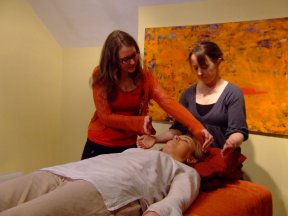


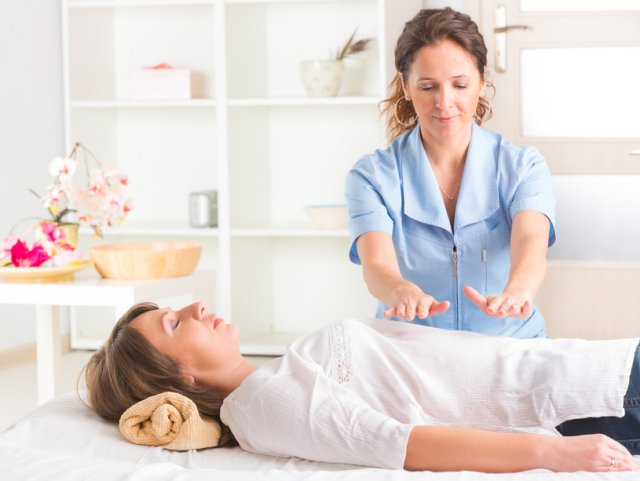
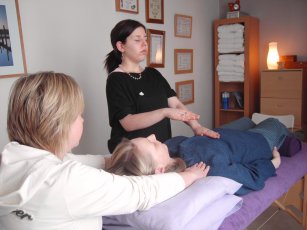
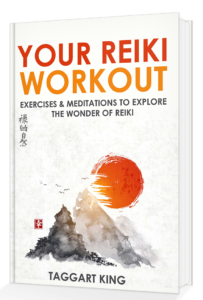


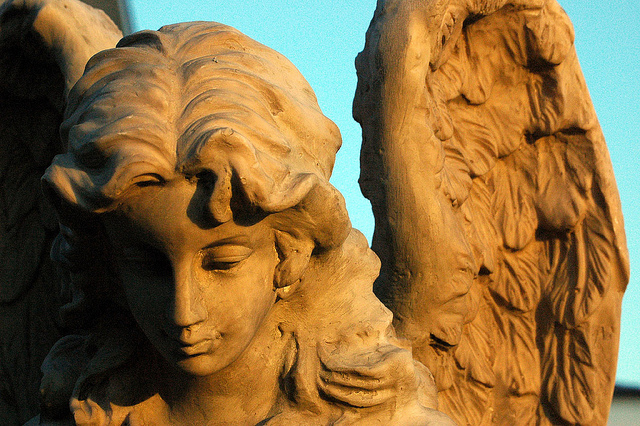
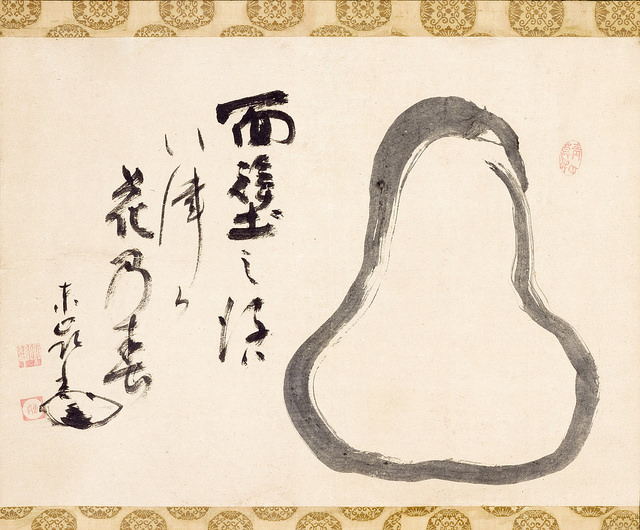


 Ann Halstead is one of the Reiki Evolution team of teachers offering Reiki training near the beautiful Summer Wine country in Huddersfield, West Yorkshire. Ann and her husband Jonathan also offer psychic development workshops and spiritual counselling.
Ann Halstead is one of the Reiki Evolution team of teachers offering Reiki training near the beautiful Summer Wine country in Huddersfield, West Yorkshire. Ann and her husband Jonathan also offer psychic development workshops and spiritual counselling.